Gueom Port (구엄포구)
10.1Km 2022-06-09
607-5, Gueom-ri, Jeju-si, Jeju
Near Aewol's coastal road, a beautiful sunset spot, there is the small and quaint Gueom Port. Next to the port, there is a rock saltern. This is where salt was produced on top of the basalt. The beautiful coastal road along the rock saltern was designated as a coastal path. There is also a small lighthouse for fishermen returning from sea at night.
Noeully (노을리)
10.4Km 2024-01-31
656 Aewolhaean-ro, Jeju-si, Jeju-do
Noeully is a dessert café located in Gueom-ri, Aewol-eup, Jeju-si. The entrance and interior are decorated like a bus stop and a glass greenhouse, respectively, allowing visitors to enjoy tropical plants and the ocean view. It consists of a rooftop café on the second floor and a sky garden on the third floor, as a no-kids zone except on the first floor. Chairs and tables face the sea for an open view of the Jeju sea and sunset, making this café a popular spot to visit for taking photos to post on social media. One of the charms of Noeully is that visitors can enjoy flowers here all year round, such as mustard flowers, hydrangeas, sunflowers, cosmos, and buckwheat flowers. The representative menu item is Briquette bread, a briquette-shaped glutinous rice bread filled with strawberry jam. In addition, the menu includes a variety of drinks, coffee, scones, and cookies.
Hallasan Mountain [National Geopark] (한라산 (제주도 국가지질공원))
10.4Km 2024-12-03
2070-61 1100-ro, Jeju-si, Jeju-do
+82-64-710-3945
Hallasan Mountain stands proudly at the center of Jeju Island and is perhaps the island’s most memorable landmark. Also called Yeongjusan Mountain, meaning "mountain high enough to pull the galaxy," Hallasan Mountain is widely known by scientists for its geological value. Designated as a national park in 1970, there are 368 parasitic cones called "oreum" (Jeju dialect meaning peak) around the main mountain.
Hallasan Mountain is famous for its vertical ecosystem of plants that results from the varying temperatures along the mountainside. Over 1,800 kinds of plants and 4,000 species of animals (3,300 species of insects) have been identified; to explore the mountain's treasures, simply follow one of the well-developed hiking trails.
Hallasan Mountain Trekking (한라산 트레킹)
10.4Km 2020-06-25
2070-61, 1100-ro, Jeju-si, Jeju-do
+82-64-740-6000
Situated on the southern tip of the Korean Peninsula, Hallasan is 1,950 meters in x_height and is the highest mountain in South Korea. Formed from volcanic activity, the mountain is a dormant volcano made mostly of basalt. Home to the magnificent Baekrokdam (lake-filled crater), the mountainside is covered with alpine flora and lush trees.
The mountain is characterized by majestic cliffs, steep slopes, interesting rock formations, and, in particular, myriads of colorful azaleas. There are over 360 small mountains (uniquely-shaped volcanic mountains called “Oreum” in Jeju dialect) surrounding Halla Mountain that offer new delights to visitors with the coming of each new season. Along with Hallasan, the oreums were officially named the Hallasan Natural Protection Area (Natural Monument No.12) in 1966.
There are six hiking trails along Hallasan. Seongpanak Trail on the east and Gwaneumsa Trail in the north go all the way up to the summit (Baekrokdam). Those looking for a less rigorous hike are advised to take the shorter trails reaching midway up the mountain. All trails are relatively short (less than 10 kilometers) and can be hiked in less than a day. Visitors are advised, however, to start early in the morning if planning on hiking up to the summit and to check official operating hours, as some trails are only open during certain hours of the day. Keep reading for information on some of the most popular trails.
* Gwaneumsa Trail (North)—Summit Trail
Gwaneumsa Trail offers hikers the best view of Hallasan’s deep valleys and stunning terrain. Midway along the trail is Guringul (a lava cave) and Tamna Valley. Tamna Valley is especially beautiful during the fall when the leaves are changing and during the winter when the entire area lays under a dusting of snow.
* Seongpanak Trail (East)—Summit Trail
This relatively long, gently sloping trail is perfect for beginners. Lush broadleaf trees give shade from the beating sun and in spring the azaleas bloom and turn the mountainside into a dazzling array of color.
* Eorimok Trail (Northwest)
This short trail is another relatively easy trail for beginners. In spring, the nearby meadows are adorned with red royal azaleas. From the stone pathway to Mansedongsan visitors can catch a breathtaking panoramic view of the countryside and the island’s signature Oreums.
* Yeongsil Trail (Southwest)
As the shortest trail in Hallasan, this trail boasts Yeongsilgiam (a spectacular cliff with series of unusual rock formations). It is covered with azaleas and royal azaleas in spring and vibrant autumn foliage starting in October.
Jeju Island Special Tourist Zone (제주도 관광특구)
10.6Km 2025-05-20
Jeju-do
+82-64-740-6000
Located to the southwest of the Korean Peninsula, the island of Jeju is Korea's largest tourist destination. The entire island has been designated as a special tourist zone, and it's easy to see why: there is hardly any spot on the island that is not photogenic. Unlike mainland Korea, which has a temperate climate, Jeju boasts a climate that is closer to subtropical. Hallasan Mountain, lying at the center of the island, is surrounded by 368 parasitic cones, known as "Oreum." Eleven beaches have been designated as tourist beaches, but including those that are not officially designated, the island features nearly thirty beaches in total. Famous beaches include Iho Tewoo Beach, Samyang Beach, Hyeopjae Beach, Geumneung Beach, and Gwakji Beach. Jeju's renowned Olle Trails, a system of hiking paths, span a total length of 425 kilometers and would take about fifteen days to complete in their entirety.
Jeju Bultapsa Temple (불탑사(제주))
10.7Km 2021-06-15
41, Wondang-ro 16-gil, Jeju-si, Jeju-do
+82-64-755-9283
Located in Samyang-dong, Jeju-si, Bultapsa Temple is a branch of Gwaneumsa Temple, the headquarters of the 23rd district of the Jogye Order of Korean Buddhism. The temple is nestled at the foot of Wondangbong Peak (alt. 170.4 meters). The temple started out as the Buddhist shrine Wondangsa, one of three temples in Jeju during the Yuan dynasty. Most of the temple was damaged due to the Jeju Uprising on April 3, 1948 and it was rebuilt in 1953. Later, the temple underwent renovations and extension works to get to the current conditions. Today, the temple has Daeungjeon Hall, Yosachae monk quarters, Jonggak Bell Tower, and Cheonwangmun Gate. The temple's five-story stone pagoda is Jeju's only stone pagoda from the Goryeo dynasty. It was designated Treasure No. 1187 in November 1993.
Jokeunnokkome Oreum Volcanic Cone (족은노꼬메오름)
11.0Km 2024-10-08
482-34 Sallokseo-ro, Aewol-eup, Jeju-si, Jeju-do
Jokeunnokkome Oreum Volcanic Cone gets its name, meaning "little high mountain" in the Jeju dialect, from its size and location near Nokkome Oreum Volcanic Cone. The name could lead to a misunderstanding, expecting this volcanic cone to over an easy hike up; the path is as difficult as any other, but offers stunning views of the nearby area, especially of the larger Nokkome Oreum.
House of Refuge (하우스오브레퓨즈)
11.2Km 2024-07-24
735 Haso-ro, Aewol-eup, Jeju-si, Jeju-do
House of Refuge is a large culture complex featuring a cafe and artwork together. The menu includes unique items using local products, such as Jeju banana pudding, and Jeju Nouveau non-alcoholic beer. The space is the perfect setting for exhibitions, parties, performances, and other events.
Halla Ecological Forest (한라생태숲)
11.4Km 2021-06-11
2596, 516-ro, Jeju-si, Jeju-do
+82-64-710-8688
Spanning 196 hectares, Halla Ecological (Eco) Forest is home to 288,000 trees representing 333 indigenous plant species. Having been designated as a conservation area, the forest provides plenty of great opportunities to observe and learn about Jeju's diversified ecosystem through various facilities including an observatory, plant nurseries, walking trails, and more. The forest also features 13 themed forests with low-impact facilities to preserve the essence of the forest. Visitors can sign up for the forest experience program to enjoy the walking trails within the forest.
Jeju Equestrian Park (제주승마공원)
11.7Km 2024-05-08
152-1 Nokgome-gil, Aewol-eup, Jeju-si, Jeju-do
Jeju Equestrian Park, nestled in the mid-mountain meadows of Yusuam-ri, Aewol-eup, offers visitors the chance to immerse themselves in the island’s natural beauty on horseback. With the longest trekking course stretching 100 kilometers, the park presents a variety of routes tailored to individual preferences, including horse riding shows, a couples’ riding academy, a children's riding camp, and corporate horseback riding workshops for the perfect equestrian leisure experience. Safety is a top priority, ensured by the best instructors for a comfortable and secure riding experience, making it an accessible adventure for even novice riders.
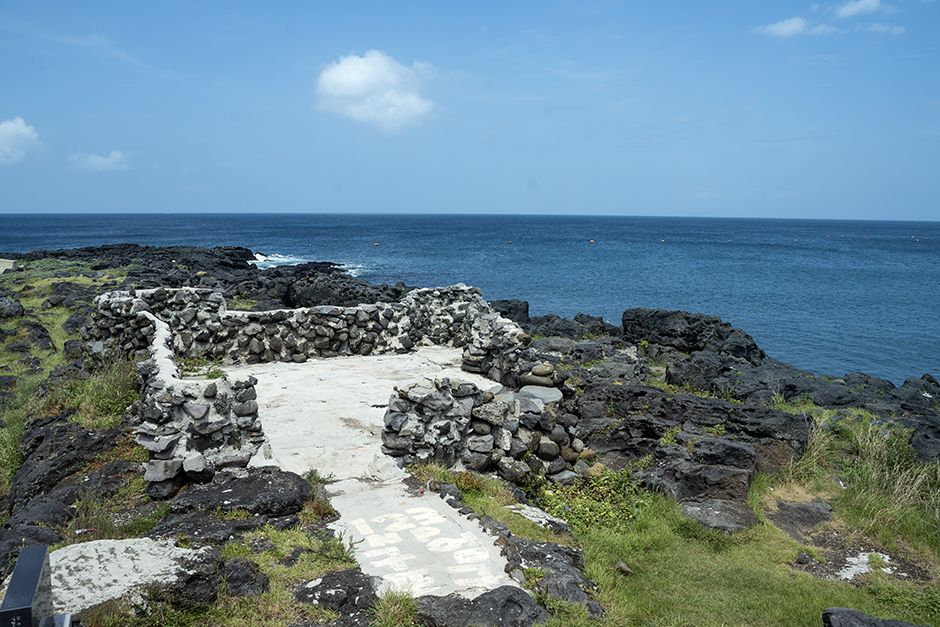
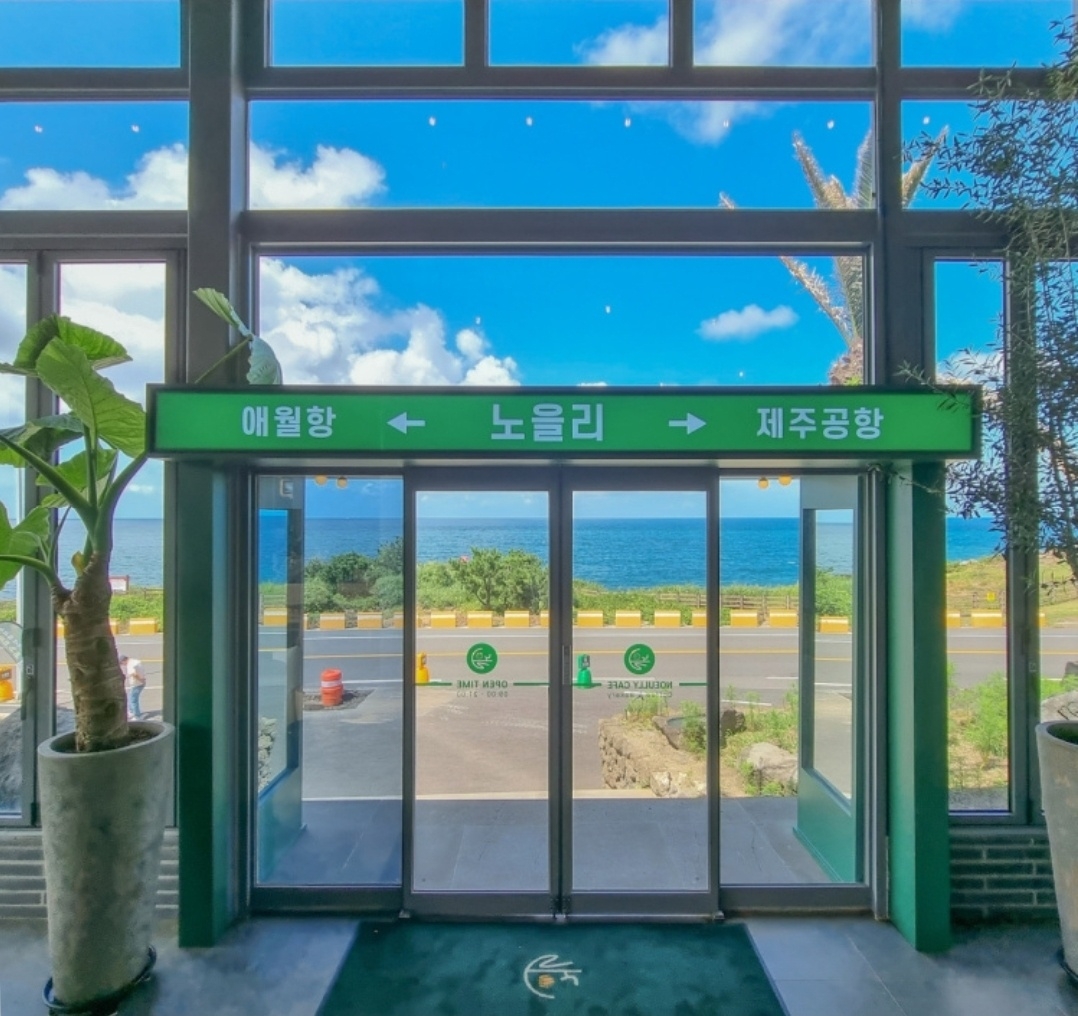
![Hallasan Mountain [National Geopark] (한라산 (제주도 국가지질공원))](http://tong.visitkorea.or.kr/cms/resource/98/2870098_image2_1.jpg)
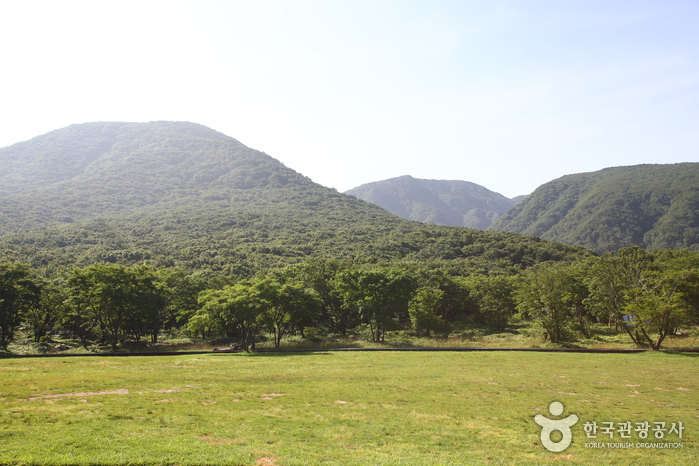
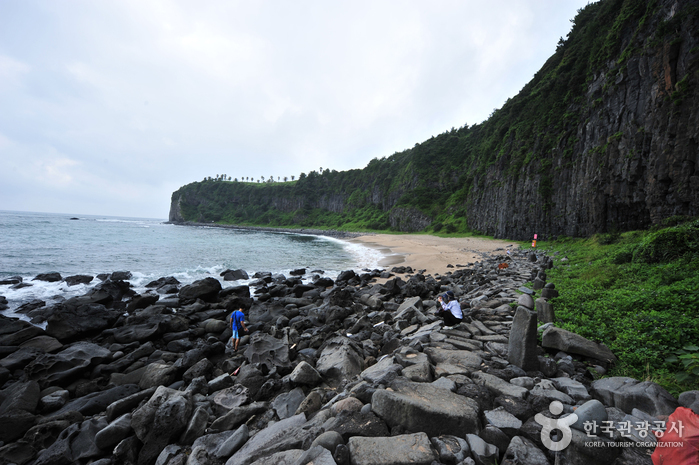
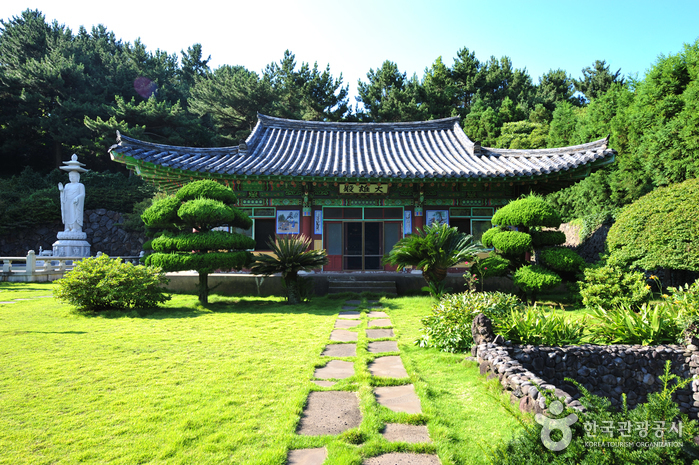
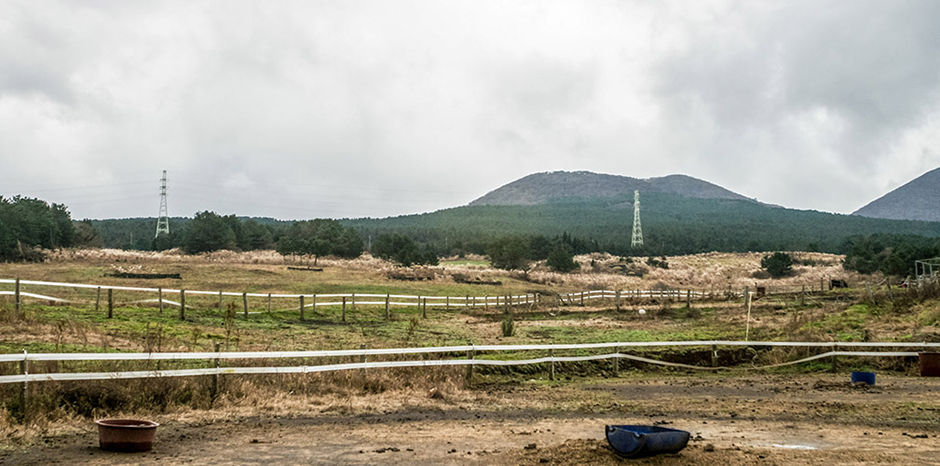
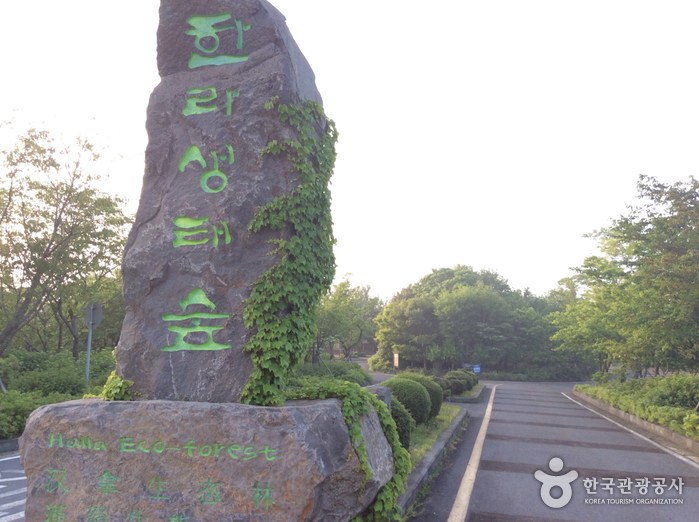

 English
English
 한국어
한국어 日本語
日本語 中文(简体)
中文(简体) Deutsch
Deutsch Français
Français Español
Español Русский
Русский